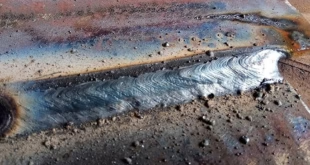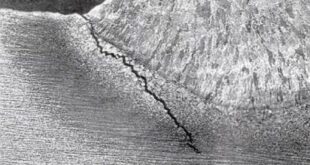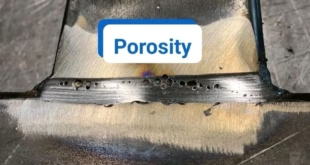What is Weld Spatter?
Introduction to Weld Spatter
Weld spatter, often referred to simply as “spatter,” is an undesirable byproduct that accompanies the welding process. It consists of droplets of molten metal expelled from the welding arc during fusion. These droplets splatter onto nearby surfaces, such as the workpiece, welding equipment, or surrounding environment.
While weld spatter is an inevitable consequence of welding, its presence can lead to various challenges and drawbacks. From aesthetic concerns to safety hazards and even financial implications, understanding and effectively managing weld spatter is crucial for ensuring quality welds and a safe working environment. In the following sections, we’ll explore the causes of weld spatter, its effects, and strategies for mitigating its impact on welding operations.
Understanding Weld Spatter

Definition of Weld Spatter
Weld spatter, in simple terms, refers to the small droplets of molten metal that are expelled from the welding arc during the welding process. These droplets can vary in size and shape, ranging from tiny particles to larger splatters, depending on factors such as welding technique, parameters, and materials used.
When the welding arc comes into contact with the metal being welded, it generates intense heat, causing the metal to melt and form the desired weld. However, some of the molten metal can splatter away from the weld pool, resulting in weld spatter. These spatters can adhere to nearby surfaces, including the workpiece, welding equipment, and surrounding area, creating a messy and potentially hazardous environment if not managed properly.
Causes of Weld Spatter
Weld spatter can arise from various factors inherent to the welding process and the materials being welded. Understanding these causes is essential for effectively controlling and minimizing spatter formation.
Welding Parameters
One of the primary factors influencing weld spatter is the welding parameters employed during the welding operation. These parameters include variables such as welding current, voltage, travel speed, and electrode type. Improper adjustment of these parameters can lead to excessive spatter generation.
For instance, high welding currents and voltages can result in increased spatter due to the intense heat produced, leading to more aggressive metal transfer modes such as globular or spray transfer. Conversely, excessively low currents or voltages may cause instability in the arc, leading to erratic spatter formation.
Material Composition
The composition of the materials being welded also plays a significant role in the formation of weld spatter. Different metals and alloys exhibit varying levels of susceptibility to spatter generation. Factors such as alloying elements, impurities, and surface conditions can influence spatter formation.
Materials with higher levels of alloying elements or impurities may exhibit increased spatter tendencies due to the presence of non-metallic inclusions or the formation of brittle phases during welding. Additionally, surface contaminants such as rust, oil, or paint can contribute to spatter formation by disrupting the welding arc and promoting irregular metal transfer.
Surface Contamination
Surface contamination on the workpiece or surrounding environment can exacerbate weld spatter issues. Contaminants such as oil, grease, paint, or moisture can vaporize upon exposure to the welding arc, creating an unstable atmosphere and interfering with the welding process.
When contaminants vaporize, they can form gas pockets or bubbles within the molten metal, leading to increased spatter formation as these bubbles burst at the surface. Additionally, contaminants can degrade the quality of the weld by introducing defects such as porosity or lack of fusion.
Effects of Weld Spatter
Impact on Weld Quality
Weld spatter can have significant implications for the quality of welded joints. When spatter lands on the surface of the weld or adjacent areas, it can interfere with the formation of a clean, uniform weld bead. Excessive spatter can create discontinuities, such as surface irregularities or undercuts, compromising the integrity and strength of the weld.
Weld spatter can act as an inclusion within the weld metal, leading to the formation of defects such as porosity, inclusions, or lack of fusion. These defects weaken the weld joint and increase the likelihood of premature failure under mechanical stress or environmental conditions.
Safety Concerns
Beyond its impact on weld quality, weld spatter poses various safety hazards to welding operators and bystanders. Hot, molten metal droplets ejected from the welding arc can travel significant distances and cause burns or injuries upon contact with exposed skin or flammable clothing.
Spatter can accumulate on nearby surfaces, including welding equipment, workpieces, or surrounding structures, creating slip and trip hazards in the welding environment. Accumulated spatter on welding torches, cables, or consumables can impede their performance and increase the risk of equipment malfunction or failure.
Cost Implications
The presence of weld spatter can have cost implications for welding operations, both in terms of direct expenses and indirect impacts on productivity and efficiency. Direct costs may include the consumption of additional consumables, such as welding wire or shielding gas, to compensate for spatter loss during the welding process.
Managing Weld Spatter
Prevention Techniques
Weld spatter management begins with proactive prevention strategies aimed at minimizing spatter formation during the welding process.
Proper Welding Techniques
Implementing proper welding techniques is fundamental to reducing weld spatter. Maintaining stable arc conditions, controlling welding parameters such as current, voltage, and travel speed, and ensuring proper electrode manipulation can help minimize spatter generation. Welding operators should receive training and certification to perform welding tasks effectively and efficiently, thereby minimizing spatter-related issues.
Using Anti-Spatter Products
Anti-spatter products, such as sprays, gels, or coatings, are designed to prevent spatter adhesion to surfaces by creating a protective barrier. These products can be applied to workpieces, welding equipment, and surrounding fixtures before welding to facilitate easier cleanup and prevent spatter buildup. Anti-spatter formulations vary in composition and application method, so selecting the appropriate product for specific welding processes and materials is crucial for optimal results.
Maintaining Equipment
Regular maintenance and inspection of welding equipment are essential for minimizing spatter-related issues. Ensuring that welding machines, torches, and accessories are clean, properly calibrated, and free from damage or wear can help maintain consistent welding performance and reduce the likelihood of spatter formation. Periodic replacement of consumable components, such as contact tips, nozzles, and liners, can also contribute to spatter prevention by promoting smooth wire feeding and arc stability.
Post-Weld Cleanup Methods
Despite preventive measures, some degree of weld spatter may still occur. In such cases, employing effective post-weld cleanup methods is essential for achieving the desired weld quality and appearance.
Mechanical Removal
Mechanical methods, such as chipping, scraping, or wire brushing, are commonly used for removing weld spatter from surfaces. These techniques involve physically dislodging spatter deposits using handheld tools or powered equipment. While effective for removing larger spatter particles, mechanical removal methods may be labor-intensive and time-consuming, particularly for intricate or hard-to-reach areas.
Chemical Cleaning
Chemical cleaning methods utilize specialized solvents or cleaning solutions to dissolve and remove weld spatter from surfaces. These chemical agents are applied to spatter-affected areas and allowed to penetrate and loosen spatter deposits before rinsing or wiping them away. Chemical cleaners are particularly useful for removing stubborn or hardened spatter from surfaces without causing damage to underlying materials. However, proper safety precautions should be observed when handling and applying chemical cleaning agents to minimize exposure risks.
Grinding and Finishing Techniques
Grinding and finishing techniques, such as abrasive grinding, sanding, or polishing, can be employed to smooth and refine weld surfaces affected by spatter. These methods involve the use of abrasive tools or abrasive media to remove excess material and improve surface texture and appearance. Grinding and finishing techniques are effective for restoring weld surfaces marred by spatter or achieving desired surface finishes for aesthetic or functional purposes. However, excessive grinding or material removal may compromise weld integrity and dimensional accuracy, so care should be taken to avoid overprocessing.
Advanced Strategies for Weld Spatter Control
As welding technology continues to evolve, advanced strategies have emerged to enhance weld quality and productivity while minimizing spatter formation. These strategies leverage automation, innovative welding processes, and best practices to achieve optimal results.
Utilizing Welding Automation
Welding automation offers significant advantages for spatter control by eliminating human error and ensuring consistent welding parameters. Automated welding systems, such as robotic welders or computer numerical control (CNC) machines, can precisely control welding parameters, including arc length, travel speed, and wire feed rate, to minimize spatter formation.
Implementing Advanced Welding Processes
Advancements in welding technology have led to the development of advanced welding processes designed to minimize spatter formation while maximizing efficiency and versatility.
One such process is pulse welding, which utilizes pulsed current to control the heat input during welding, resulting in reduced spatter and improved weld penetration. By pulsing the welding current at high frequencies, pulse welding minimizes heat buildup and allows for precise control of the weld pool, resulting in smoother, spatter-free welds.
Best Practices for Minimizing Spatter
In addition to utilizing advanced technologies, implementing best practices is essential for minimizing spatter formation in welding operations.
- Optimize Welding Parameters: Fine-tuning welding parameters, such as voltage, current, and travel speed, to match the specific requirements of the welding process and materials being welded can help minimize spatter formation.
- Maintain Clean Work Surfaces: Ensuring that workpieces and welding equipment are free from contaminants such as oil, grease, or rust can reduce spatter generation by promoting stable arc conditions and preventing surface reactions.
- Use High-Quality Consumables: Using high-quality welding consumables, including electrodes, filler metals, and shielding gases, can minimize spatter formation and improve weld consistency and integrity.
- Monitor and Adjust Welding Conditions: Regularly monitoring welding conditions and making adjustments as needed to address issues such as arc instability or excessive spatter can help maintain optimal welding performance and quality.
- Implement Effective Welding Techniques: Employing proper welding techniques, such as maintaining consistent travel speed, electrode angle, and arc length, can help minimize spatter formation and produce high-quality welds.
FAQs
How does weld spatter affect welding quality?
Weld spatter can compromise the integrity of welded joints and detract from their appearance, leading to reduced welding quality.
Can weld spatter be removed after welding?
Yes, weld spatter can typically be removed using methods such as grinding, chipping, or chemical cleaning.
Is weld spatter a safety hazard?
Yes, weld spatter can pose safety hazards by causing burns or igniting flammable materials in the vicinity of the welding operation.
Are there specialized tools for preventing weld spatter?
Yes, there are various anti-spatter products available, such as sprays, gels, and coatings, designed to prevent spatter adhesion.
How can welders minimize spatter formation?
Welders can minimize spatter formation by optimizing welding parameters, maintaining clean work surfaces, and using anti-spatter products.
 Welding of Welders All about Welding and Welders
Welding of Welders All about Welding and Welders



